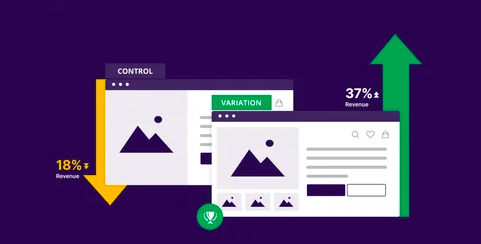Excerpt: RPA, that is, Robotic Process Automation, can sound like something very technical and complex. Well, it is true also to a certain extent. But its objective is extremely simple. It aims to reduce the repetitive manual tasks that the employees need to perform via its software. And this enables them to focus their energy on more tasks that can’t be undertaken by the software. RPA provides customers access to premium quality services as well. It implies that the business, as well as the customers, both are at the receiving end.
Table of contents:
- Introduction
- The role of Speed in RPA
- The role of Security in RPA
- Balancing Speed and Security
- Conclusion
Introduction:
Very suitable use of RPA can be seen in the retail industry, where it is used to control inventory, operations, billing, etc. An excellent example is Walmart using more than 500 bots to automate its various processes. But the security factor is something that needs to be taken care of to reap its full advantage. RPA can encounter major cybersecurity threats if proper security checks are not there. This is the reason why 74% of organizations have reported to be slowing down on the deployments of bots and RPA.
This makes the case clear of a balancing act needed between speed and security.
The role of Speed in RPA
The implementation of RPA with an optimum speed is far more difficult than its adoption. An inefficient speed RPA can even be counterproductive to the advantages offered. In fact, the main aim of adopting RPA is to speed up the process only. It is also advisable to adopt it at the right time. The accuracy of the automated process can be increased by 50% to 70% if implemented at a proper time. It can even go as high as 95% as well. The bottom line here is that the sooner you implement RPA with an optimum speed, the more competitive edge you will gain in the market.
The role of Security in RPA
Just like every other digital service, several digital identities are created in the RPA deployment in the form of bots. Privileged credentials are needed by all these bots to gain access to all the business-related activities, be it data transferring, reconciliation, generating reports, etc. Sometimes, these bots can go un-supervised if the proper security system is not there. This creates room for unhealthy external sources or attackers to get hold of unattended bots. That implies that your sensitive business data has been accessed by these attackers. Now, they can use it for any malicious intent, including operations shut-down, data destruction, payments re-direction, systems sabotage, malware distribution, etc. This makes the need for security in RPA an imperative.
For Candidates who want to advance their career, RPA Online training is the best option
Balancing Speed and Security
While it is a bit tough to strike a perfect balance between the two, it is not at all an impossible task. The following tips can be considered if you are looking for a balancing act between speed and security-
- Check the bot controls which are already in place
Try to identify and fill the gaps in the management policies of credentials. You need to ensure that the credentials are stored in a sound and safe place. A high frequency of rotations of these credentials should be ensured. The complexity and uniqueness of passwords are other things that need to be registered. Implement effective measures of monitoring as well as auditing the use of credentials.
- Ensure security from the very beginning
There have been instances where the security team doesn’t even know about the deployment of RPA. And they only come to know when the security breach has already taken place. This is something that can be avoided easily by informing your entire team about RPA from the very beginning. The ideal situation is that where every stakeholder of the company is made aware of such deployment well in advance. And not informing the security team is the last thing that you can afford.
- Suspend your hard-coded credentials
While you might think that hard-coded credentials will be the best security option, this is incorrect. The space for attacks gets enhanced when the data authentication is embedded directly into the source of the code. The first rationale for the argument is that the rotation of credentials and passwords becomes tough in the case of credentials that are hard-coded. The operations can be disrupted majorly sometimes, even when you try to do so in such codes. Additionally, the credentials get exposed by the hard-coded credentials when there is sharing of scripts. Hence, the privileges might get escalated when the attackers move laterally by using bots and reusing credentials.
- Utilize the mechanism of defense in the path
Defense in path is a layered software mechanism that involves several practices for ensuring and protecting sensitive data from cyberattacks. For instance, several approaches can be adopted while inputting the file assets, such as-
- Verifying data and validating data
- Limited permissions to the file
- Encoding of data output
- Restrict the trust in services
While gathering and using databases from multiple resources can be helpful, it brings some issues as well. Not all data services are capable of being trusted. Therefore, the security teams should come up with some measures to correctly identify trustworthy resources. And a mechanism should be placed where only a secured network connection is allowed.
- Remove excessive permissions to bots
Problems can also arise when the bots are allowed to reach databases and applications even out of their legitimate access. The accessing management of data is as important as data handling. No leeway should be tolerated while specifying access roles to the bots. Therefore, make your approach very clear from the beginning about providing limited access to the various bots. Access to bots should be eliminated wherever it is not required.
- Minimize the room for attack
The attackers are always in search of the weak spots to enter the arena. By minimizing these spots for attackers, you can enhance the security to another level. These methods include-
- Limiting the data input
- Minimizing remote data
- Formatting to a centralized repository
- Reducing the networks and services utilized by them
- Automate all these approaches as much as possible
Performing the above-mentioned approaches can be counterproductive if they all are handled manually. Moreover, the manual process can lead to further loopholes and mistakes. Therefore, look for ways to automate this process to the best of your capability. One way is to store the credentials in a repository that is centralized. This way, complex passwords can be created as well as rotated automatically, and strict security standards and rules can be implemented. Also, the hard-coded credentials can be removed as well.
- Ensure the simplicity of security mechanisms
A simpler bot and security mechanism enable the efficient handling of bots by the security team. It will aid in both securities as well as the speed of RPA deployment.
Conclusion
The routes of cyberattacks are evolving with each passing day. Therefore, using data security measures is extremely important. But if speed is neglected while focusing extensively on security, you will most probably get lagged in the competition. Hence, striking a perfect balance between security as well as speed needs to be performed very well. To achieve this purpose, make sure that the developers and IT professionals hired are the best in the industry.
Author Bio
Meravath Raju is a Digital Marketer, and a passionate writer, who is working with MindMajix, a top global online training provider. He also holds in-depth knowledge of IT and demanding technologies such as Business Intelligence, Salesforce, Cybersecurity, Software Testing, QA, Data analytics, Project Management and ERP tools, etc.































